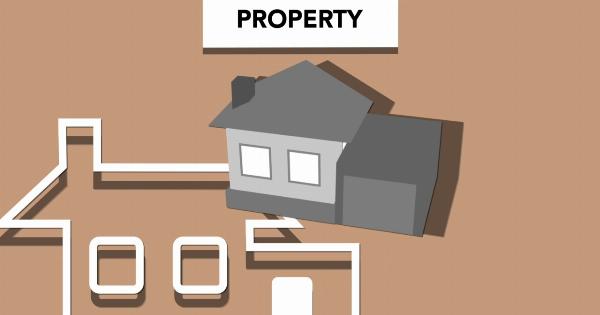Natural disasters can strike at any time, leaving behind devastating consequences for homeowners. From floods to fires, these events can cause extensive damage to properties and result in substantial financial losses.
In such uncertain times, having the right insurance coverage is crucial in order to protect your property and ensure its speedy recovery. In this article, we will explore the various ways in which insurance can help safeguard your property against floods and fires.
Understanding Flood Insurance
Floods are among the most common natural disasters that can wreak havoc on your property. While homeowners’ insurance policies typically cover damages caused by fire, they rarely include coverage for flood damage.
To protect your property adequately, you need to consider purchasing a separate flood insurance policy.
Flood insurance policies are offered through the National Flood Insurance Program (NFIP), which is administered by the Federal Emergency Management Agency (FEMA). These policies cover damages to your home’s structure as well as its contents.
It’s important to note that there is a waiting period of 30 days before your policy goes into effect, so it’s wise to secure coverage well in advance of any potential flood threat.
The Importance of Fire Insurance
When it comes to protecting your property from fires, having sufficient fire insurance coverage is of utmost importance.
Fire insurance policies are typically part of homeowners’ insurance policies, but it’s essential to review the coverage limits and ensure they are adequate to meet your needs.
A comprehensive fire insurance policy covers damages to the structure of your home, other structures on your property (such as garages or sheds), and your personal belongings.
It can also provide coverage for additional living expenses if you’re unable to reside in your home while it’s being repaired or rebuilt.
Types of Insurance Coverage
Insurance coverage for floods and fires extends beyond just the structure of your home. It’s essential to understand the different types of coverage available to protect your property comprehensively.
1. Building Property Coverage
This type of coverage protects the physical structure of your property from damages caused by floods or fires. It includes coverage for walls, floors, roof, windows, and built-in fixtures.
Building property coverage ensures that you can repair or rebuild your home in the event of significant damage.
2. Content Property Coverage
In addition to the structure, it’s equally important to protect your personal belongings from flood or fire damage.
Content property coverage provides financial assistance to replace or repair your furniture, electronics, appliances, clothing, and other personal possessions that may be damaged or destroyed.
3. Additional Living Expenses Coverage
In the aftermath of a flood or fire, your home may be temporarily uninhabitable. Additional living expenses coverage reimburses you for the cost of alternative accommodations, meals, and other necessary expenses while your home is being restored.
4. Replacement Cost Coverage
When determining the coverage limit for your property, you have the option to choose either actual cash value (ACV) or replacement cost coverage.
ACV coverage factors in the depreciation of your property and belongings, meaning you will receive a reimbursement amount that accounts for their current value. On the other hand, replacement cost coverage does not consider depreciation and provides funds to replace damaged items with new ones of similar quality and features.
5. Deductibles and Coverage Limits
It’s crucial to review and understand the deductibles and coverage limits of your insurance policies. Deductibles refer to the amount you are responsible for paying out of pocket before insurance coverage kicks in.
Coverage limits determine the maximum amount of money your insurance company will pay for a covered loss. Ensure that your deductibles are affordable and your coverage limits are sufficient to protect your property adequately.
Taking Preventive Measures
While insurance coverage is essential, taking preventive measures to reduce the risk of floods and fires is equally important. Here are some proactive steps you can take to protect your property:.
1. Install Smoke Detectors and Fire Alarms
Make sure your property is equipped with smoke detectors and fire alarms in strategic locations. Test them regularly to ensure they are functioning correctly.
2. Clear Gutters and Drainage Systems
Regularly clean your gutters and ensure that drainage systems are clear of any debris. This will help prevent water buildup and reduce the risk of flooding.
3. Secure Electrical Systems
Have a professional inspect your electrical systems regularly and address any issues promptly. Faulty wiring can lead to electrical fires.
4. Maintain Fire Safety Equipment
Keep fire extinguishers in easily accessible areas of your property, especially in the kitchen and near fire-prone areas. Also, ensure that your fire sprinkler system is well-maintained and functioning properly.
5. Use Fire-Resistant Materials
When renovating or building your property, consider using fire-resistant materials for the roof, walls, and other vulnerable areas. This can help minimize the potential damage caused by fires.
Conclusion
Protecting your property from floods and fires requires a multi-faceted approach that includes both insurance coverage and preventive measures.
By understanding the types of coverage available, reviewing policy limits, and taking proactive steps to reduce risks, you can establish a robust defense against the potential financial and emotional burdens caused by natural disasters. Remember, investing in the right insurance today can provide you with peace of mind and ensure a prompt recovery in the face of adversity.































